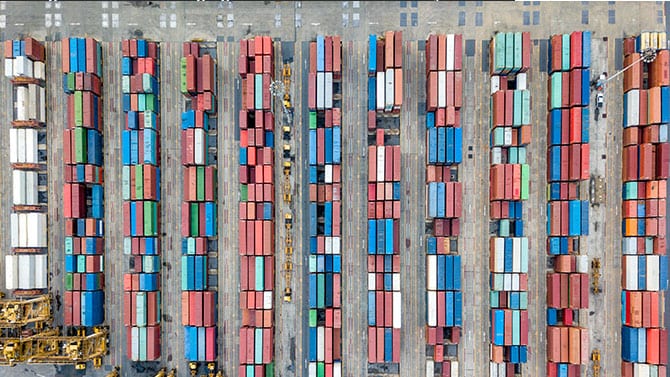{{item.title}}

What are the best strategies transportation and logistics companies can use to adopt new technologies such as blockchain and artificial intelligence?
The transport and logistics industry is extremely diverse. It is in some ways a cottage industry, with many small companies involved in focused, limited shipping and logistics activities; it also has some of the biggest global delivery businesses. As a result, decisions to implement new technologies will vary, depending on availability of funds to invest in new technologies and R&D. Nonetheless, with the overall T&L arena moving quickly towards adopting more digital functions and capabilities across its value chain, R&D investment and innovation is essential, no matter what size the company is.
Among all the recent technological developments, blockchain has perhaps the most potential to impact efficiency and profit margins — as an encrypted digital ledger that tracks the movements of products from factory to customer, it can eliminate the red tape that makes it difficult to manage shipments, scheduling and deployment of assets. But because of its breadth, blockchain cannot be implemented as a solo effort; it requires cooperation across the many handoffs in the transport and logistics world. Simply put, the introduction of blockchain creates an ecosystem problem that can be addressed only with joint collaboration.
Thus, large companies controlling the highest volume of global shipments may lead the effort to implement blockchain for their own benefit, but midsized T&L firms should take advantage of opportunities to participate in the growing list of blockchain pilot programmes that are led by major sector players, industry associations, consulting firms and key clients (such as large, shipment-dependent manufacturing companies). The Blockchain in Transportation Alliance has more than 500 members globally, primarily T&L firms. The group’s goal is to develop T&L industry blockchain standards and support new applications.
AI requires a different strategy because it is an internal innovation that T&L companies can implement only if they have investment resources, a technical workforce and a sufficiently robust data network. In those cases, AI, or machine intelligence, can serve in key roles in an organisation that can improve overall performance. For instance, an AI system can manage realtime decision-making for optimal carrier selection, routes and scheduling based on massive amounts of historical information. Or it can do predictive analysis, using inferences from the available data to plan the most efficient asset deployment and inventory management.
Because of the complexity and cost, AI systems in their broadest definition are not likely to be a major fixture in transport and logistics companies in the short term. However, small and midsized T&L companies should certainly make initial moves towards eventually integrating AI into their organisations by adding advanced robotics systems to their warehouses, shipping depots and inventory management programmes. Not only do these systems improve picking, packing and shipping activities, but they also make determinations about how to optimally store items and load trucks on the basis of factors including size, destination and perishability.
These suggestions could be viewed as ways to start small, using AI to build gradually towards creating a more innovative future. Even so, they should have an immediate payoff in enhancing efficiency, customer service and operational profit margins.
Download the full Transportation and Logistics trends 2019 report here


